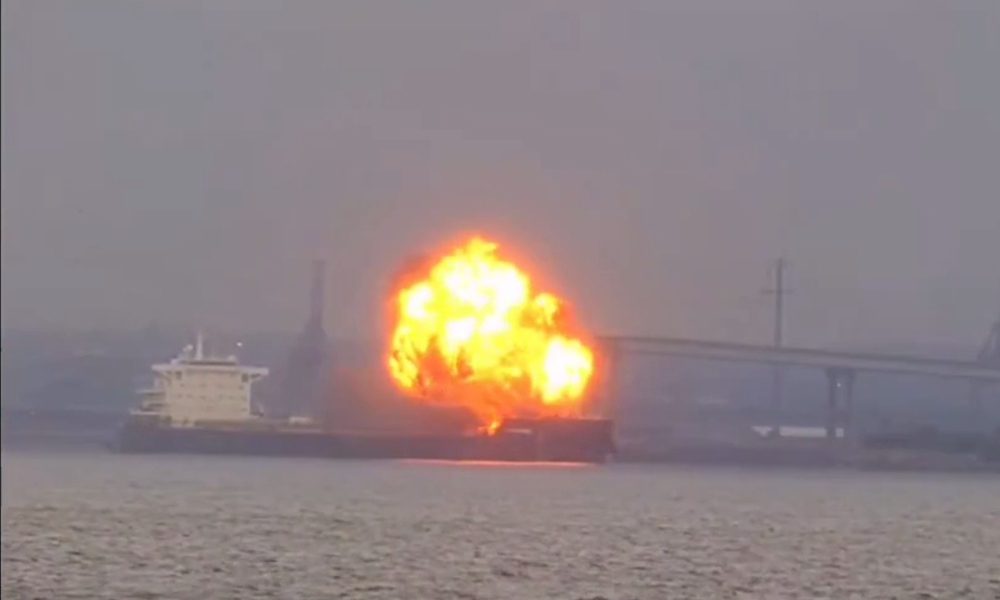A barge tow pilot failed to adjust for an intense outdraft current, leading to a collision on the Ohio River during high-water conditions in 2023, according to the National Transportation Safety Board (NTSB).
On March 28, 2023, the towing vessel Queen City was navigating the Ohio River with 11 barges when it struck the Vane Dike at the McAlpine Locks and Dam’s arrival point in Louisville, Kentucky. The impact caused the tow to disintegrate, resulting in an estimated $2 million in damages to the barges and cargo.
The NTSB report identified that the barge tow pilot didn’t adequately offset the strong outdraft current.
As the Queen City was passing through the center span of the Clark Memorial Highway Bridge, the pilot attempted to shift the tow west to enter the Portland Channel. However, the McAlpine Dam’s outdraft current, which was moving across the lock entrance toward the dam, pulled the vessel away from the channel’s entrance. The tow’s starboard side hit the Vane Dike mooring cell shortly after crossing the bridge.
At the time of the collision, the water height at the McAlpine Locks was experiencing “extreme high water/extreme high flow conditions,” as per the Mississippi and Ohio Valley and Tributaries Waterways Action Plan, at approximately 17.5 feet and rising,
The report stated, “When towing vessel operators decide to steer through an area with strong outdrafts, they must steer a course to account for the set from the outdraft.” The pilot of the Queen City intended to guide into the channel to the locks, aware that an outdraft would set the tow toward the Vane Dike and the dam gates. Despite the pilot’s attempts to direct the tow to the left, he underestimated the outdraft’s strength and its impact on the tow.
The NTSB report also highlighted the unique hazards high currents can pose for vessels navigating inland rivers, “In addition, near dams, greater dam openings in high-water conditions lead to high flow rates, which can produce outdraft currents near the dam. Mariners should thoroughly assess the potential impact of outdraft currents when entering or exiting locking channels. Vessel horsepower and vessel handling should be carefully considered. Mariners should also consult available resources, such as Waterways Action Plans and company policies, when passage planning.”

 Join The Club
Join The Club










